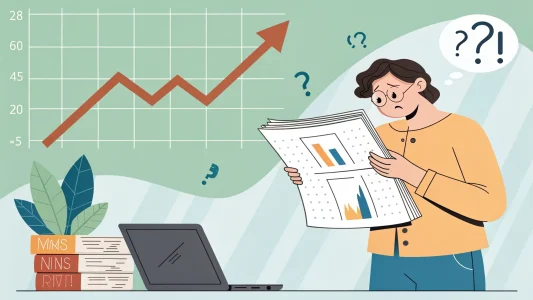Table of Contents
ToggleMarket Rallies and Their Timing
The stock market is well-known for its cycles of ups and downs. On five occasions in history, the S&P 500 soared by 25% within a brief period. When we review these times, several patterns emerge that provide insight into possible future market behavior. It is important to remember that market corrections are not unusual. History confirms that a short-term pullback can open a window for strong long-term gains.
When analyzing each of these periods, several key themes come to light:
- Timing: Each rally happened after challenging periods, such as crises and geopolitical events.
- Recovery: Most pullbacks have given investors a prime opportunity to re-enter the market.
- Long-Term Gains: Historically, the best returns have been achieved when investors used these dips as entry points.
View this post on Instagram
Historical Investment Periods
I find that studying these distinct time periods reinforces the idea that market recoveries bring opportunity. I will review each historical episode in detail.
1975: Following the early 1970s oil embargo, the market experienced significant turmoil. In 1975, after the economic stress from the embargo conditions set the stage for a strong recovery, investors who entered the market at that time benefited before inflation began to increase rapidly later in the decade. This period reminds us that even when challenges loom, there can be hidden opportunities.
1982: The environment in 1982 offered what many consider to be an outstanding entry point. That year, a correction provided investors with the chance to buy into a market that soon went on to deliver powerful gains. Over the following decade, those who invested during this period enjoyed notable growth. This instance is a prime example of how a temporary pullback can lead to favorable long-term outcomes.
1999: The turn of the millennium brought a different outcome. In 1999, the market rallied strongly, but a subsequent crash in the technology sector erased many of those gains. The dot-com crash served as a lesson that not every surge guarantees lasting success. For investors, this period stands as a cautionary example that timing matters and that even strong rallies can be followed by prolonged downturns.
2009: Following the worldwide financial crisis, markets reached a turning point in 2009. After a severe downturn, a swift recovery ensued, and investors who seized the opportunity were rewarded with outstanding returns over time. As a result, 2009 is viewed as one of the best moments in recent history to commit capital into the market.
2020: The most recent episode occurred during the COVID crisis. When the pandemic sent shockwaves into nearly every aspect of daily life, governments stepped in with strong stimulus measures. This flood of liquidity helped fuel a rapid market rebound. Investors in 2020 witnessed a dramatic recovery fueled by supportive monetary policies, indicating that even in times of widespread uncertainty, there are moments when the market resets.
Lessons From Past Pullbacks
Each historical period shows that strong rallies have often followed temporary declines in the market. I have learned that the following principles can be drawn from these events:
- Opportunity in Downturns: Market pullbacks are not the end, but rather a chance to reset one’s investment strategy. Four out of the five historical periods provided excellent entry points when the market dipped by around 10%.
- Long-Term Perspective: Waiting for a complete recovery may require patience. Investors who stayed the course during these periods saw significant rewards.
- Review of Context: Each episode had its own unique set of circumstances. For example, 1975 followed an oil embargo, while 2009 came after a financial crisis. Understanding the context is crucial when making investment decisions.
By reflecting on these episodes, I learned that a drop of about 10% has historically been a strong indication. Even if some events, like the market peak in 1999, appear as outliers, they reinforce the lesson that careful analysis of the underlying economic conditions is essential.
Current Market Outlook and Considerations
Today, many investors are watching news about tariffs and market corrections. While past performance is never a guarantee of future returns, the historical data show that market pullbacks have often been the best time to invest. The possibility of a 10% drop in the current market is one that merits close attention. I have seen that such brief declines can set the stage for substantial gains if the fundamentals remain intact.
It is always wise to consider a variety of factors before making investment decisions. I have observed that economic news, such as tariff updates and fiscal policies, can trigger short-term declines. However, these events tend to settle over time, allowing a recovery to emerge. The key is not to be swayed by temporary fluctuations. Instead, one should look at the long-term picture.
My experience teaches me that situations like a 10% pullback on current tariff news should not cause panic. History has consistently shown that well-timed investments during downturns have often been rewarded. Thus, by keeping a calm approach and following market trends, one might uncover excellent buying opportunities.
Strategies for Investing in a Pullback
The historical evidence supports a strategy that focuses on disciplined investing. Here are some thoughts based on the past market behavior:
- Stay Informed: Keep track of the economic events that impact market movements. An understanding of the context helps in making sound decisions.
- Stick to Long-Term Goals: It is wise to maintain a long-term perspective. Temporary market declines can be beneficial if the overall growth trend is positive.
- Act Carefully: Do not rush into buying or selling decisions based solely on headlines. Capture the details of broader market trends and the statistics that support those trends.
These simple practices have served me well in my journey as an investor. Watching historical data and learning from past events encourages a steady and balanced approach to the market. While every downturn carries its own set of risks, almost every decline has historically been followed by a recovery that put early investors in a better position.
Reflections on Market Behavior
The most notable insight is the difference between events that lead to sustainable growth and those that cause long-term setbacks. The period around 1999 stands out as a reminder that while a rally might seem promising, unforeseen events can drastically change outcomes. When the dot-com bubble burst, even a strong rally provided only temporary euphoria. It took a decade for the market to recover fully. Such history urges today’s investors to be cautious and balanced.
Comparing the episodes from 1975, 1982, 2009, and 2020, I find that the broader economic context and the level of governmental support played a significant role in paving the way for recovery. For example, after the oil embargo of the seventies, inflation offered challenges that eventually gave way to a period of rebuilding. Similarly, during the recession of 2008-2009, significant intervention from financial authorities helped restore confidence among investors.
Each period serves as a reminder that the market goes through cycles. While declines may feel unnerving at the moment, they are followed by opportunities that investors can take advantage of. Market pullbacks can be seen as clearing the path for a return to growth if one maintains the discipline to invest at the right moment.
Navigating Uncertain Times
Market uncertainty can lead to hesitation. However, history demonstrates that every dip has the potential to yield good returns when handled wisely. I have learned that a focus on the long haul is vital. There is always a chance that minute adjustments in strategy may lead to beneficial outcomes over time.
While assessing today’s market signals, including tariff news and possible pullbacks, my overall view is that careful analysis and disciplined investing will help secure a favorable outcome. I encourage investors to remain patient, review market conditions critically, and focus on long-term objectives rather than being overwhelmed by short-term changes.
It is essential to remember that no market is immune to fluctuations. Temporary declines provide a chance to reposition portfolios. A 10% pullback, for example, is one that historically has opened the door for a strong recovery. With this perspective in mind, investors may see these moments as a signal to re-enter the market rather than to retreat.
Final Thoughts on Investment Timing
Reviewing these recurring market patterns has reinforced my belief in disciplined investing. The short-term drops should not discourage investors who are prepared to take a long-term view. Experience has taught me that the periods following these declines offer potential for significant growth, as seen in the cases of 1975, 1982, 2009, and 2020.
It is prudent for investors to be aware of historical trends and the context that created them. The current market scenario, marked by tariff discussions and a possibility of a 10% pullback, may be reminiscent of past situations where opportunity became apparent after a short dip.
Overall, the evidence suggests that we should remain measured and thoughtful when approaching investment decisions during uncertain times. Our decisions should be guided by history and sound principles rather than by fleeting market emotions. Taking advantage of these opportunities could well prove beneficial when the market resumes its upward trajectory.
As someone who has guided many investors over the years, I recommend maintaining a long-term focus and not being swayed by short-term headlines. Ultimately, patience and a clear understanding of market cycles will serve us best in our pursuit of financial growth.

















